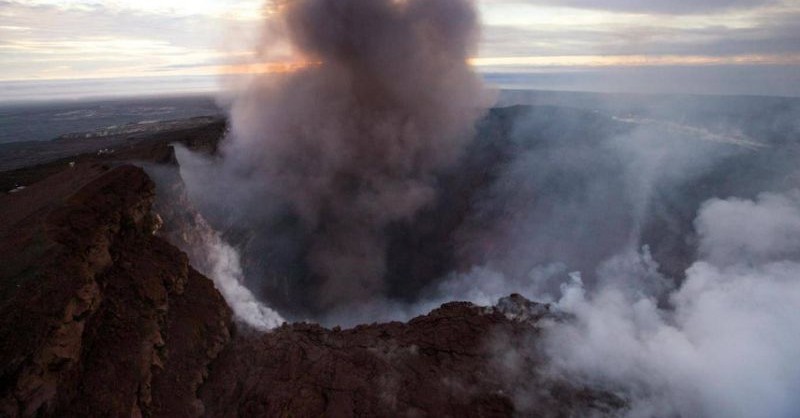Hawaiians have been told to “prepare to evacuate” amid growing fears a volcano which forms the state’s largest island could be about to erupt.
Authorities have closed 16,000 acres of national park and begun identifying shelters after hundreds of earthquakes heightened concerns that lava and molten rocks could spew out of Kilauea volcano.
Geologists warned a continued increase in seismic activity following the collapse of a crater floor on Monday suggested eruption could be imminent.
The collapse at Pu’u O’o, an open vent below Kilauea’s summit crater and lava lake, triggered a series of earthquakes and pushed magma into new underground chambers.
The lava has moved down the east slope of the volcano and into the Big Island’s Puna district.
The US Geological Survey’s Hawaiian Volcano Observatory (HVO) said the underground magma may have already gone beneath Highway 130, a main road which leads to a popular viewing point, and was approaching homes.
“Should an eruption occur, residents along the east rift zone may have little warning,” said civil defence administrator Talmadge Magno. “Residents in that area should be prepared to evacuate.”
A school in the area has shut as a precaution and nearly 16,000 acres of Hawaii Volcanoes National Park have been closed to the public as state and federal officials make preparations for possible eruption.
“The preparations include the identification of shelters, mobilization of police and other security personnel to ensure residents’ safety, and road crews to ensure access to evacuation routes,” the Big Island mayor’s office in a statement.
Hawaii County Civil Defence Agency closed the area to visitors on Tuesday and ordered private tour companies to stop taking people into the region.
“Residents should heed all advice offered by Civil Defence and take the actions recommended by Civil Defence to prepare for a possible eruption,” said HVO geologist Janet Babb, adding she could not say when or where an eruption was most likely.
“An eruption is possible because magma is clearly moving through the east rift zone and it could come to the surface,” she said. “The possibility is definitely there, I can’t give you a probability.”
Similar activity has been recorded prior to previous eruptions in the area, Ms Babb added.
If magma breaks through the ground, lava fountains could shoot skyward and spread rock and other volcanic debris around the area.
“Typically when an eruption first starts it’s pretty vigorous,” said Ms Babb.
Most of Kilauea’s previous activity has been not been explosive, but an eruption in 1924 shot ash and 10-ton rocks into the sky, killing one man.
In 1983 an eruption of Pu’u Oo resulted in lava fountains soaring over 1,500 feet high. In the decades since, the lava flow has buried dozens of square miles of land and destroyed many homes.
In 2008, after a series of small earthquakes rattled the island, Kilauea’s summit crater opened and gushed lava and rock over 75 acres of the mountain, damaging a nearby viewing point.
Last week, the lava lake at the volcano’s summit rose and spilled over the crater edge, marking the largest lava inflation since it erupted in 2008. The latest activity at Pu’u O’o does not appear to have changed the summit lava lake.
In 2016, lava from Pu’u O’o crept down the east side of the volcano and reached the ocean for the first time in several years. The flow created new land along the shoreline, some of which later collapsed, opening a giant “firehose” lava stream.
Source: yahoo


































